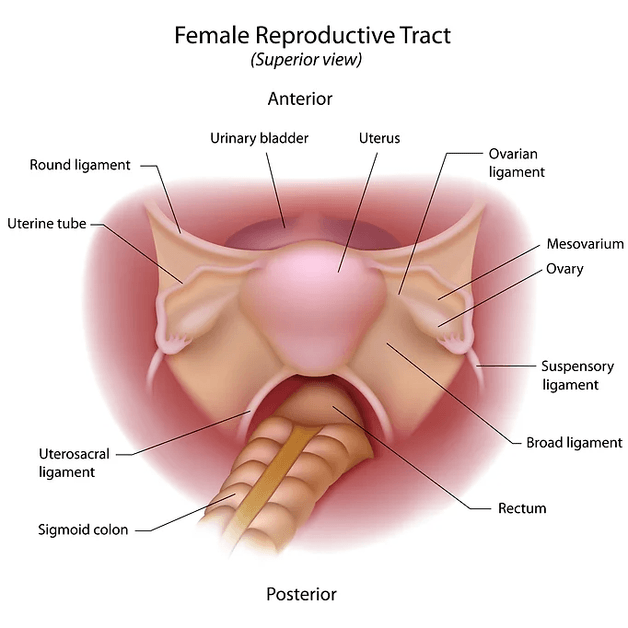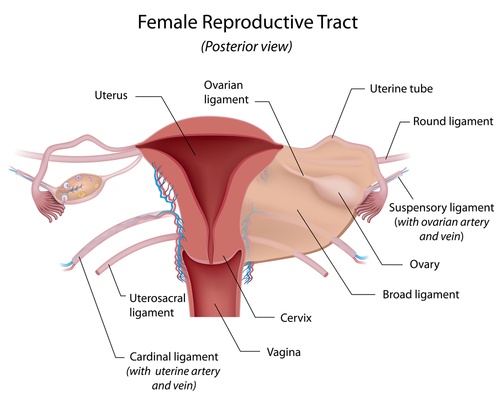
Ovary from the Latin Ovarium meaning egg or nut: The ovaries produce the eggs called ova.

The broad ligament contains the ovarian vessels and nerves to the ovaries, fallopian tubes and uterus. The suspensory ligaments of the ovaries (sometimes known as infundibulopelvic ligaments) attach the ovaries to the sidewall of the pelvis. These ligaments have the ovarian vessels from the abdominal aorta running through them, and they can also be considered part of the broad ligament. Finally, the Ovarian ligament is on the underside of the ovary and connects the ovary to the uterus.
Fimbria of the fallopian tube: Fimbria is a Latin word that means “fringe”. Commonly used in anatomy, “fimbriae” plural is the fringe of tissue at the end of the fallopian tubes and connected to the ovary.
The primary function of the fingerlike projections of the fimbriae is to collect the egg and draw it into the fallopian tube.
Fallopian Tubes: sometimes known as the uterine tubes or oviducts, stretch from the ovary to the uterus and are lined with hairlike structures called cilia which help transport the egg. These tubes have 4-5 layers, and it is the innermost layer with microscopic hairs. Each fallopian tube is 10-13 cm long and 0.5-1.2 cm in diameter. These tubes can be named along the length: Infundibulum by the fimbria, ampulla, isthmus, intramural towards the uterus.
Ovarian cancer is the fifth leading cause of death among all female cancers. Studies have pinpointed the fimbrial area as the most common site of origin.
Lessons from BRCA: the tubal Cumbria emerges as an origin for pelvis serous cancer – DOI: 10.3121/cmr.2007.702

Uterus: A pear-shaped hollow muscular organ is about your fist’s size. It is also super stretchy, needing to accommodate the baby. The fallopian tubes enter the uterus at the top via the intramural (uterine horns or Cornu of uterus) opening. We have an internal orifice (ostium) at the top of the cervix; the opening at the distal end of the uterus is the ostium (an opening into a vessel or cavity of the body) uteri going from the cervix to the vagina. We can think of the uterus as sitting in the centre of the female pelvic cavity. The uterosacral ligaments attach the uterus to the sacrum. The cardinal ligaments connect it to the sidewall of the pelvis. The rope-like structure of the round ligaments originates at the uterine cornu and blends with the labia majora and the mons pubis. The broad ligament is a peritoneal fold around the round ligament. These are thickenings in the endopelvic fascia and support the uterus.
